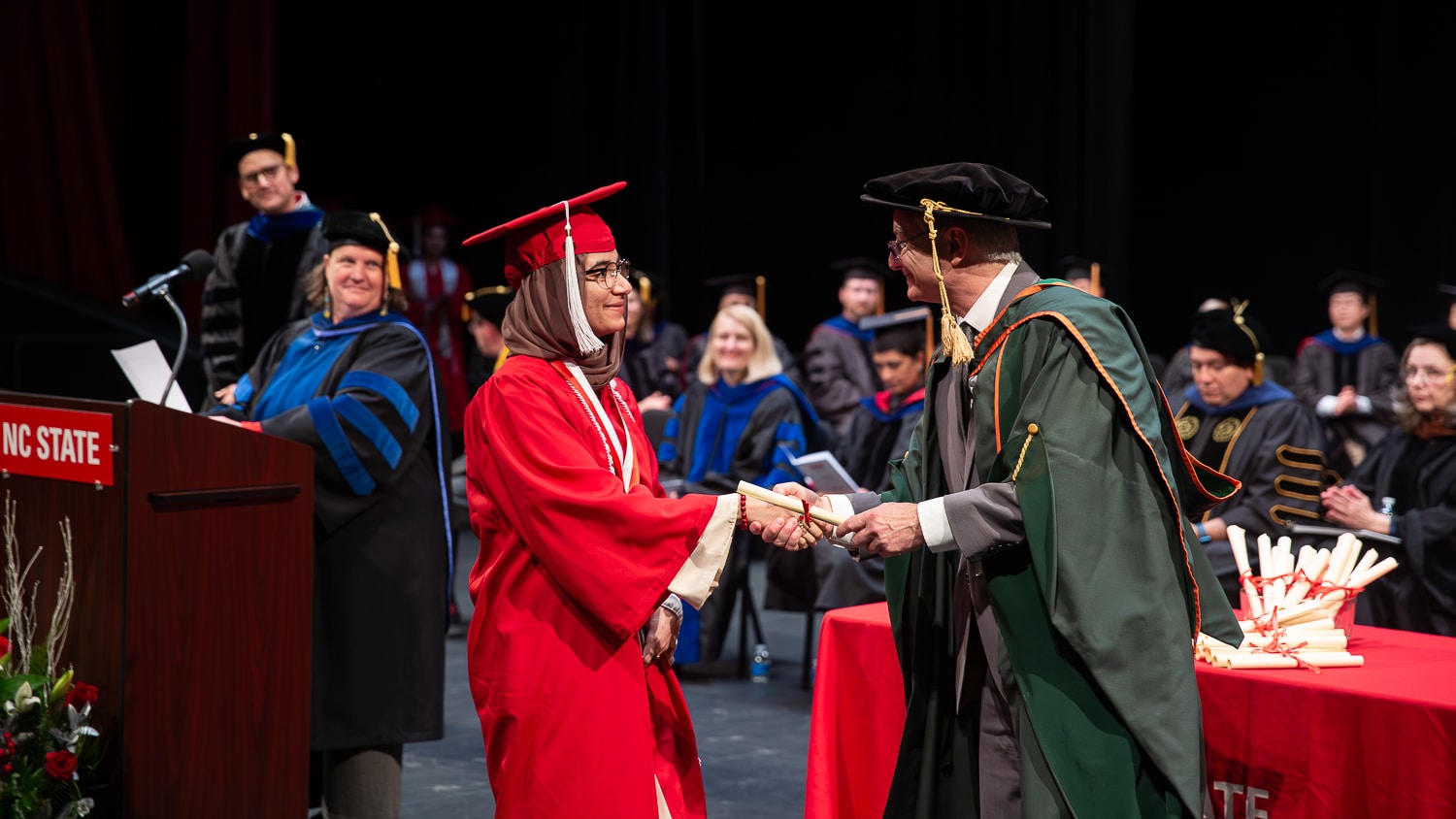TT Alumna at Intersection of Science, Design and Communication

By Cameron Walker
Wilson College of Textiles alumna Kilara Le ‘04 is one of the busiest experts in the textile field, working as a designer, consultant, researcher and writer. As a senior analyst for LMI, a not-for-profit consulting firm dedicated to improving the management of government, and an award-winning author for the AATCC Review, a publication of the American Association of Textile Chemists and Colorists, she must stay up to date on emerging research and be able to distill the information for a broad audience.
“My clients look to me to make their technology more approachable and break it down so people at any level of an organization can understand…It’s asking the right questions and doing the research to figure out how things work.”
“I focus on topics that are timely and that I think the industry should be aware of or that focus on new technology and how it’s being applied,” said Le, whose recent articles include “Virtual Textiles: Making Realistic Fibers in 3D,” “Natural Dyes: Return of the Classics,” and “Arach-Nouveau: Re-Engineering Spider Silk for Textiles.”
Her article, “Microfiber Shedding: Hidden Environmental Impact,” won both the 2018 Apex Award recognizing excellence in publishing and the 2018 Tabbie Award from Trade Association Business Publications International. The piece spotlights microfiber pollution — microscopic synthetic fibers released into the water system by laundering clothing and other textiles — found throughout the world’s waters, floating on ponds and in the deep ocean, even falling to earth in raindrops. She combines thorough research and expert interviews to illustrate the problem, discuss what scientists and organizations are doing to address it, and offer action steps consumers can take.
Le’s academic background helped prepare her for her work at the intersection of product development, technology and communication. She graduated with degrees in both textile technology and art and design through the now-defunct Anni Albers Scholars Program, which offered a double major through the College of Design and what is now the Wilson College of Textiles.
“[At the time] the Wilson College of Textiles was very linear, very science and math focused…Textiles was digging deep into fiber chemistry and how yarn is constructed,” said Le. “I feel like that linear and scientific background has been really important to understand the scientific method of approaching things, which I think we can apply to design as well.”
In her work with LMI, Le supports the clothing and textile supply chain program as a subject matter expert for the Defense Logistics Agency. She has worked as a consultant in product development and business processes in the apparel, footwear and sewn products industries for over a decade.
“My clients look to me to make their technology more approachable and break it down so people at any level of an organization can understand,” she said. “It’s asking the right questions and doing the research to figure out how things work and then looking for analogies and ways to explain it. We’re all dealing with things that seem more complex as we get more technology in our lives, but when you break it down, it’s not that complicated. Everything has a beginning and an end.”
According to Le, emergent topics in the textile field include automation and robotics, 3D design, virtual try-ons and mass customization, supply chain, product life cycle and sustainability.
“The total life cycle of garments goes along with microfiber pollution,” she said. “That’s something that, as a wider industry, we have to address. We have to look at what happens to an item — whether it’s tires or upholstery or shoes or anything else in the textile sphere. It goes beyond recycling or repurposing; it goes to design and how we are designing fibers. What is their lifespan? What happens to them afterwards and is that the best decision?”
Le believes an education in textiles can help foster this spirit of inquiry and prepare students for a career on the cutting edge of technology and innovation.
“The introduction from that scientific approach of how things function on both the macro and micro levels is a really good way to start thinking about the world…learning how things work, from both the chemical and mechanical points of view,” she said. “I’m very curious about the world and how things work and I feel like the Wilson College of Textiles really fed that curiosity.”
Learn more about Textile Technology or explore an education in Fashion and Textile Design.
- Categories:


